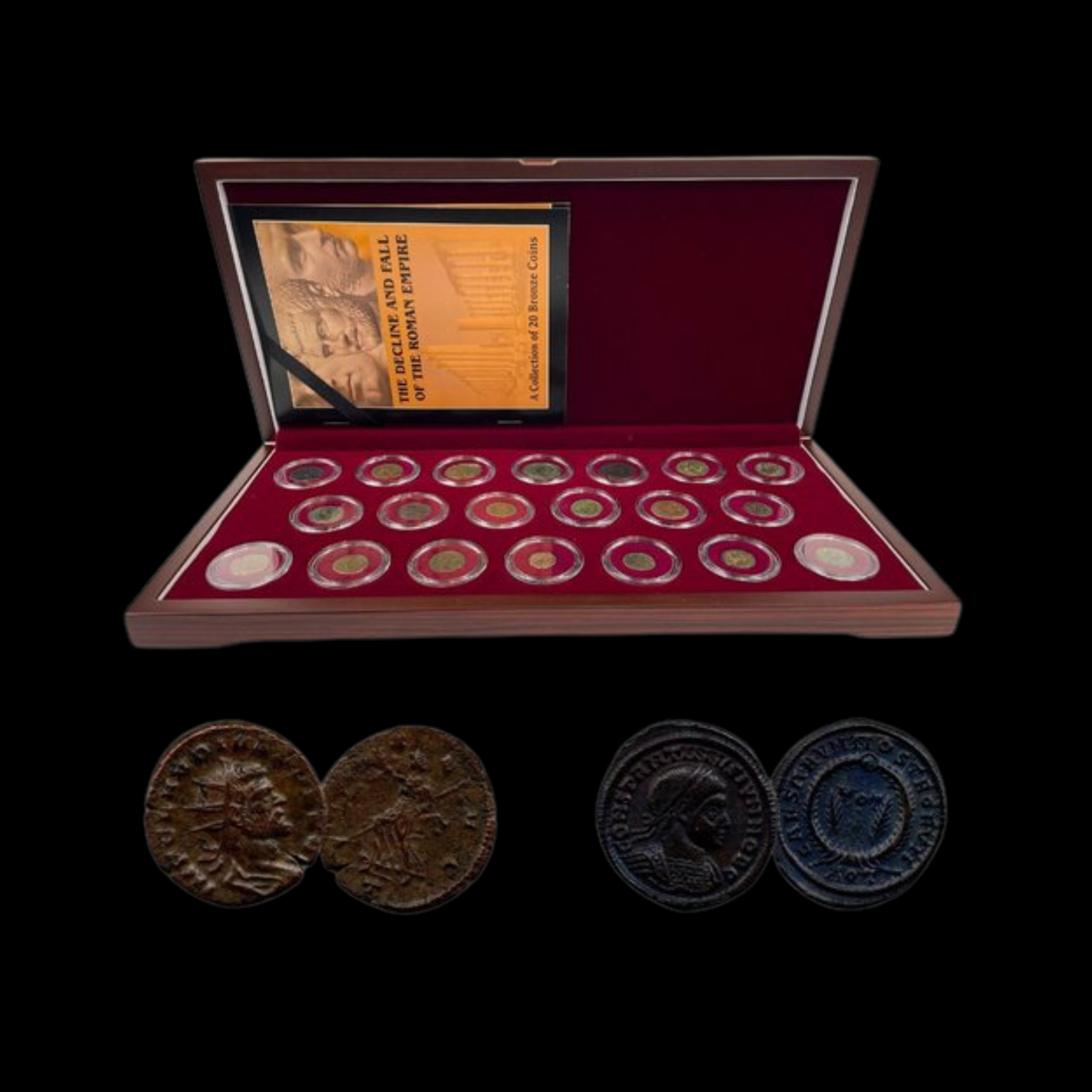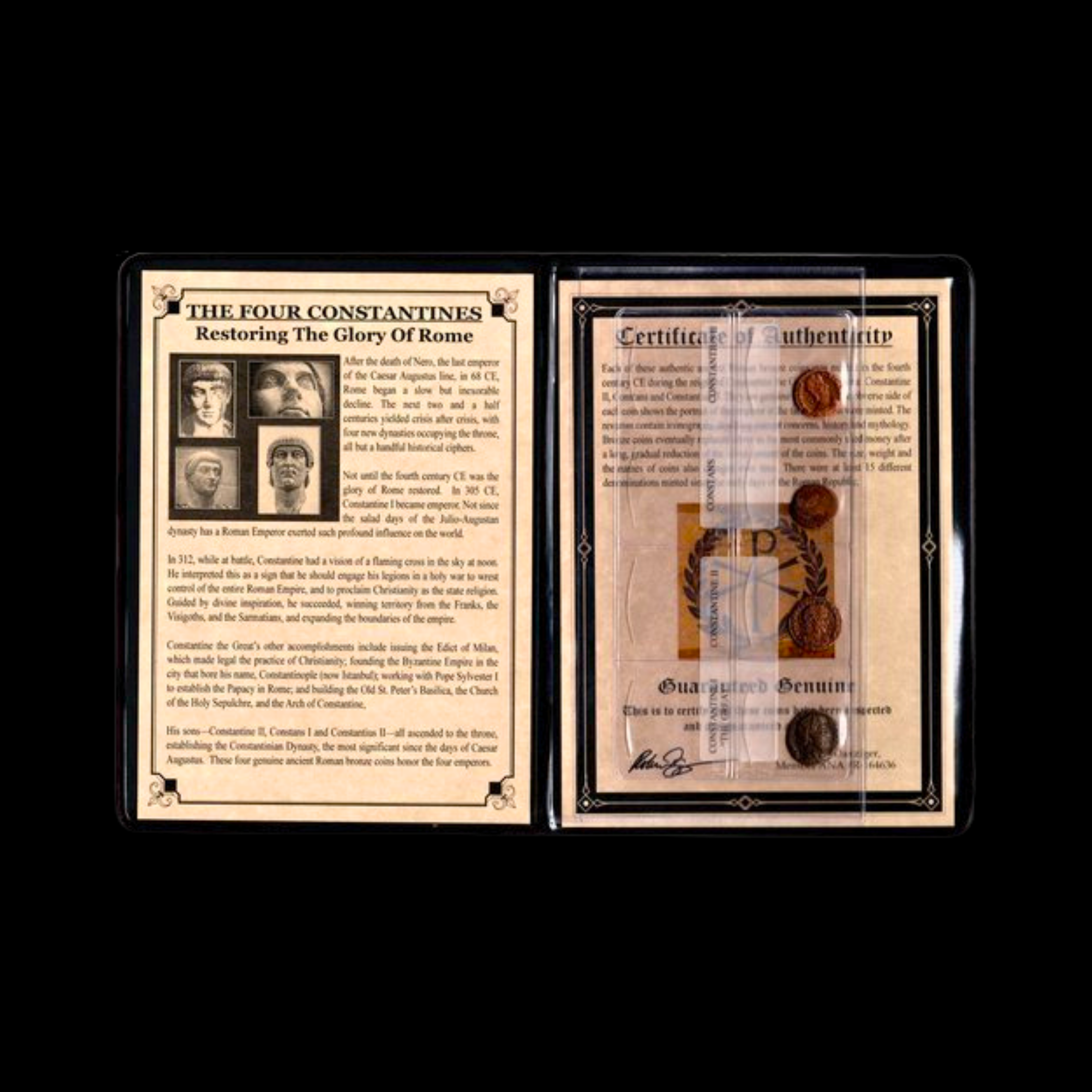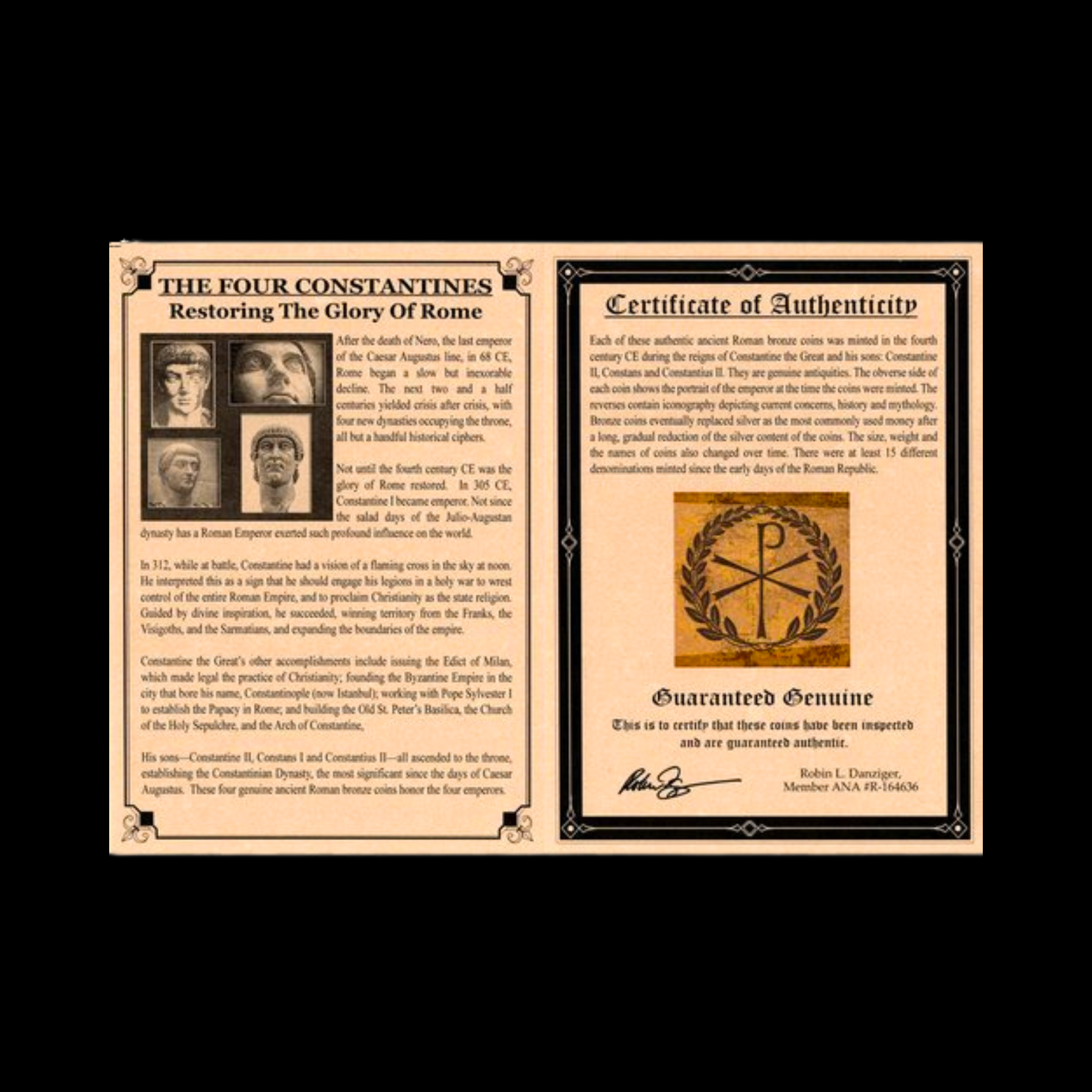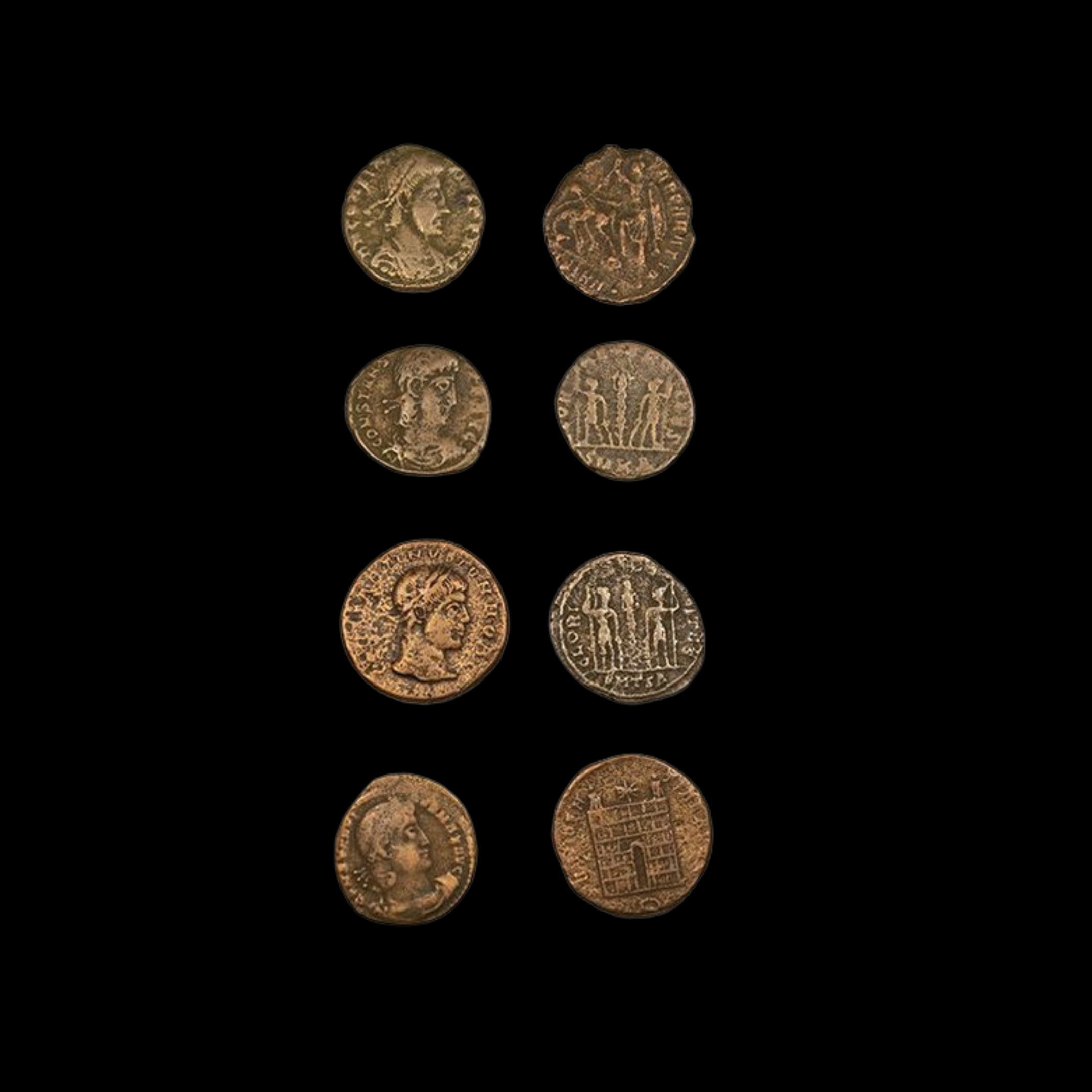 Image 1 of 7
Image 1 of 7

 Image 2 of 7
Image 2 of 7

 Image 3 of 7
Image 3 of 7

 Image 4 of 7
Image 4 of 7

 Image 5 of 7
Image 5 of 7

 Image 6 of 7
Image 6 of 7

 Image 7 of 7
Image 7 of 7








Roman Bronze Coin of Caesar Constantius Gallus (about 1,670-1,675 years ago)
The coins shown are representative examples of the grade and type, but not the actual specimens for sale. For details on NGC’s grading standards and definitions, please refer to our NGC Grading page.
This bronze coin portrays Constantius Gallus, nephew of Constantine the Great who was appointed Caesar (junior emperor) by his cousin Emperor Constantius II to help govern the sprawling eastern provinces. Despite his Constantinian lineage and initial imperial favor, Gallus' brief career illustrates the dangerous power dynamics within the imperial family during the mid-fourth century, when suspicion and court intrigue could rapidly transform privilege into peril.
Coin Description:
Front side: Portrait of Constantius Gallus facing right, typically bareheaded or wearing a small laurel wreath or pearl diadem, with Latin inscription giving his name and title of Caesar
Back side: May feature military standards, camp gates, soldiers, or personifications common in late Roman coinage, along with mint marks and appropriate Latin legends
Technical Details:
Bronze composition
Denomination: Likely AE2 or AE3 (modern classification for medium-sized late Roman bronze coins)
NGC certified
Minted between 351-354 AD
Condition as certified by NGC
Historical Significance:
Constantius Gallus represents the complex dynastic politics following Constantine the Great's death. As nephew of Constantine through his father's side, Gallus initially seemed fortunate to survive the purge of family members that occurred when Constantine's sons took power. After years of obscurity, his fortunes changed when his cousin Emperor Constantius II, lacking sons of his own, elevated Gallus to Caesar in 351 AD and married him to his sister Constantina. Posted to Antioch (modern Syria) to govern the eastern provinces, Gallus proved a harsh ruler whose methods alarmed imperial officials. Reports of his brutality and potential ambitions reached Constantius II, who summoned him to court in 354 AD. Despite assurances of safety, Gallus was arrested en route, stripped of imperial insignia, and executed—a stark reminder that even imperial blood provided little security during this era of suspicion and shifting power.
The coins shown are representative examples of the grade and type, but not the actual specimens for sale. For details on NGC’s grading standards and definitions, please refer to our NGC Grading page.
This bronze coin portrays Constantius Gallus, nephew of Constantine the Great who was appointed Caesar (junior emperor) by his cousin Emperor Constantius II to help govern the sprawling eastern provinces. Despite his Constantinian lineage and initial imperial favor, Gallus' brief career illustrates the dangerous power dynamics within the imperial family during the mid-fourth century, when suspicion and court intrigue could rapidly transform privilege into peril.
Coin Description:
Front side: Portrait of Constantius Gallus facing right, typically bareheaded or wearing a small laurel wreath or pearl diadem, with Latin inscription giving his name and title of Caesar
Back side: May feature military standards, camp gates, soldiers, or personifications common in late Roman coinage, along with mint marks and appropriate Latin legends
Technical Details:
Bronze composition
Denomination: Likely AE2 or AE3 (modern classification for medium-sized late Roman bronze coins)
NGC certified
Minted between 351-354 AD
Condition as certified by NGC
Historical Significance:
Constantius Gallus represents the complex dynastic politics following Constantine the Great's death. As nephew of Constantine through his father's side, Gallus initially seemed fortunate to survive the purge of family members that occurred when Constantine's sons took power. After years of obscurity, his fortunes changed when his cousin Emperor Constantius II, lacking sons of his own, elevated Gallus to Caesar in 351 AD and married him to his sister Constantina. Posted to Antioch (modern Syria) to govern the eastern provinces, Gallus proved a harsh ruler whose methods alarmed imperial officials. Reports of his brutality and potential ambitions reached Constantius II, who summoned him to court in 354 AD. Despite assurances of safety, Gallus was arrested en route, stripped of imperial insignia, and executed—a stark reminder that even imperial blood provided little security during this era of suspicion and shifting power.































